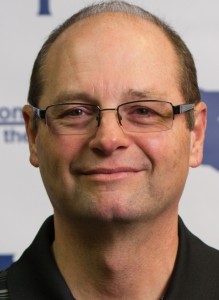Today, I am medication free (the doctor said it couldn’t happen) and the blogs in this series will explain the steps I took to accomplish this feat. These observations and opinions are my own and do not reflect the opinion of NCI, doctors, or anyone else. Part 2/4
While at work in 2010 I felt nauseas.

I stumbled to the company restroom to splash water on my face where I proceeded to pass out. I awoke and was taken to the hospital where I spent the next seven days recovering. I was at my heaviest weight. After four years of shooting insulin twice a day, my weight continued to climb as did my insulin needs. The more I ate, the more insulin I required. The more insulin I used the more my hunger increased. This vicious circle had built over the previous four years. I was now stabbing a needle into myself twice a day, administering 70 units of medication EACH day. Stress is a huge contributing factor in the escalation of diabetes.
STRESS. We all have it in our life. Some stress is self-imposed, some stress is imposed by outside influences beyond our control. In times of high stress I could feel my diabetes being stimulated. The demand of our fast–paced, jobs seem to automatically lead to stressful situations. Normally, my blood sugar would escalate causing headaches (behind my eyes), blurred vision, and the inability to concentrate. Had I been a driver at this time, I certainly would have had to pull my truck off the road to keep the motoring public and myself safe.
BLOOD SUGAR. While increasing my insulin dosages I felt an increase in hunger. As difficult as the high sugar levels were, low sugar levels were more devastating. High levels caused severe headaches, lethargic feelings, and blurred vision. As miserable as high sugar levels would make me feel, it was still better than the results of low blood sugar. Shakes, blurred vision, upset stomach, and a lack of concentration were the early indicators that I was on my way to passing out. This had happened in my home several times, fortunately my wife had trained herself to react quickly to bring me back to consciousness.
FOOD. In our “drive through” world we live in, diet is always a challenge. Anticipating the drive to work, many of us skip a traditional breakfast. Whether we bring a meal from home to eat at our desk, find ourselves too busy to eat, or leave the office to nourish ourselves at lunch, finding proper nutrition is difficult to achieve. Our evening meal is just as challenging. Worn out from work, many times it is easier to “grab” something on the way home. While driving a truck eating at a fast food restaurant or a traditional sit down café allows drivers the social interaction they miss while on the road. Either option challenges the driver to eat healthy.
EXERCISE. When I was diagnosed with diabetes I was healthy and active. One Sunday afternoon I was playing soccer with a group of men who included my doctor. At half time he asked me to ride to his office with him. I did so and at the office he asked to take my blood sugar reading. I agreed. Levels that should have been 80 – 120 were at 639. He immediately ordered me to take medication and did in-depth blood tests the next morning. I’ve always exercised, but as I became older and heavier, I felt less inclined to do so. When I left the hospital after collapsing at work, I began walking my dog daily – whether I felt like it or not. My weight dropped from 246 to 226 within three months. My insulin need dropped from 70 units per day to 50.